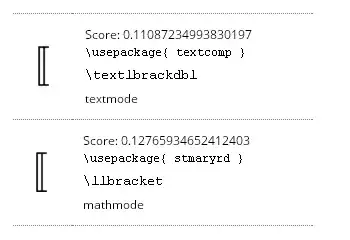This is a pretty simple, straightforward question. I've seen in the literature $[n]=\{0,1,2,\dots,n-1\}$ and $[n]=\{1,2,3,\dots,n\}$. Is there a similar convention for $[n]\backslash[m]=\{n,n+1,\dots,m\}$? Maybe [n,m] or something?
I can't seem to find a resource on the net that compiles conventions. If you happen to have a list of conventions or an answer, I'd appreciate it. I'm trying to save valuable space and don't want to confuse a reader with an unexpected definition.
Some of these responses were a bit helpful: About Math notation: the set of the $n^{th}$ natural numbers

